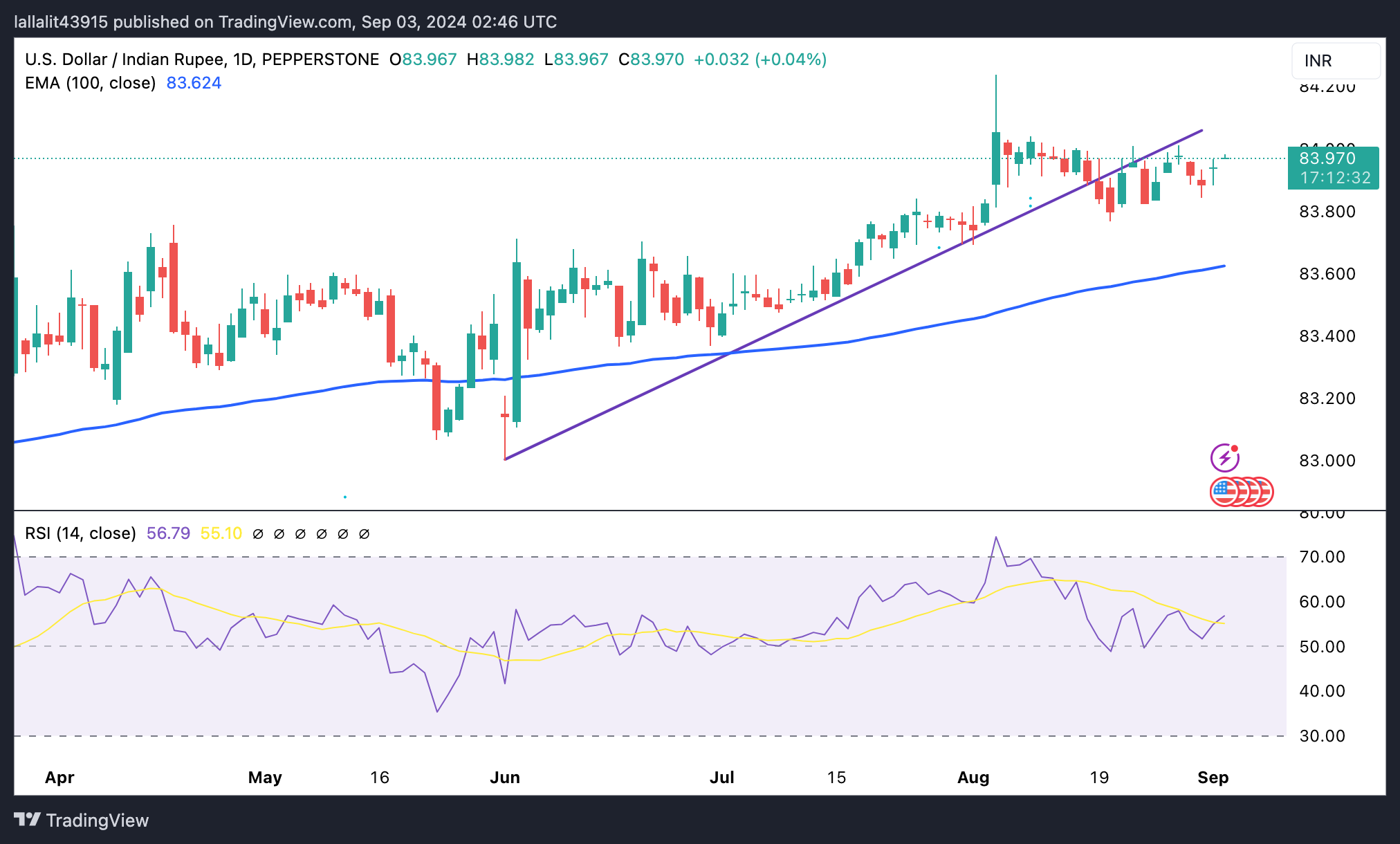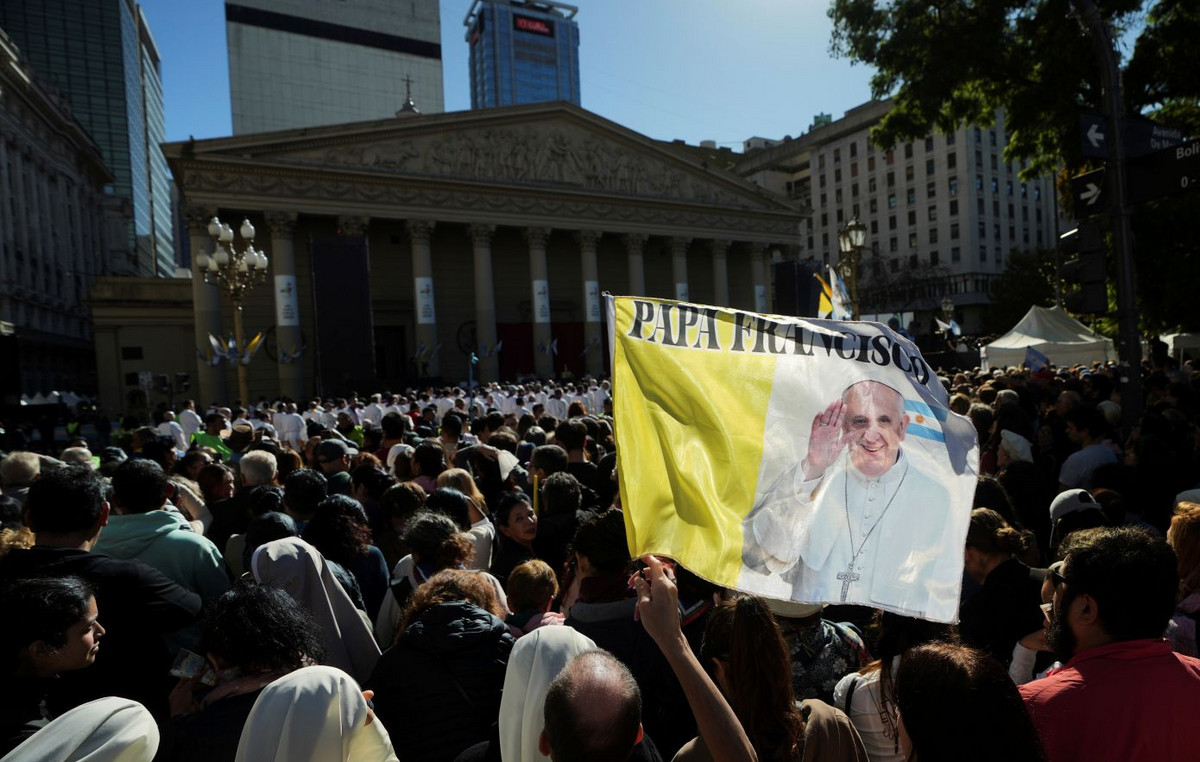- Indian Rupee is down in Asian trading on Tuesday.
- Foreign capital inflows and falling crude oil prices could support the INR.
- Investors will focus on India’s HSBC Services PMI for August and the US ISM Manufacturing PMI, due later on Tuesday.
The Indian Rupee (INR) weakened on Tuesday, pressured by a recovery in the US Dollar. The positive Indian equity market, foreign fund inflows and a drop in crude oil prices could limit the INR’s losses. However, rising demand for the US Dollar (USD) from importers and safe-haven flows ahead of key US labor market data could weigh on the local currency.
India’s HSBC Services PMI for August is due on Tuesday ahead of the US ISM Manufacturing PMI. All eyes will be on Friday’s US labour market reports, including Non-Farm Payrolls (NFP), unemployment rate and average hourly earnings for August. Federal Reserve (Fed) Chair Jerome Powell’s comments at Jackson Hole last month have made this Friday’s NFP report more significant than usual. A weaker than expected result could see the market price in a larger rate cut, putting selling pressure on the USD.
Daily Market Wrap: Indian Rupee remains on the defensive amid global factors
- The HSBC India Manufacturing Purchasing Managers’ Index (PMI) fell to a three-month low of 57.5 in August. This figure was weaker than expected and from the previous reading of 57.9.
- “New orders and output also reflected the broader trend, with some panellists citing fierce competition as a reason for the slowdown,” said Pranjul Bhandari, chief India economist at HSBC.
- HSBC India Services PMI is forecast to improve to 60.4 in August from 60.3 in July.
- The US ISM manufacturing PMI for August is projected to rise to 47.5 in August from 46.8 previously, while the services PMI is forecast to fall to 51.1 in August from 51.4 in July.
- The market currently expects the Fed to cut interest rates by 25 basis points (bps) in September, pricing in a nearly 69% probability, according to the CME FedWatch tool.
Technical Analysis: USD/INR in consolidation mode, long-term upside potential intact
The Indian Rupee is trading lower on the day. The USD/INR pair maintains the bullish vibe on the daily time frame, characterized by the price holding above the key 100-day exponential moving average (EMA) and the 14-day Relative Strength Index (RSI) settling above the midline.
The potential upside barrier for USD/INR is seen at the psychological figure of 84.00. Any follow-through buying above this level could expose 84.50.
On the bearish case, the first downside target lies at 83.84, the low of August 30. Further south, the next support level emerges at the 100-day EMA at 83.62.
Indian Rupee FAQs
The Indian Rupee (INR) is one of the most sensitive currencies to external factors. The price of crude oil (the country relies heavily on imported oil), the value of the US Dollar (most trade is done in US Dollars) and the level of foreign investment are all influential factors. Direct intervention by the Reserve Bank of India (RBI) in the foreign exchange markets to keep the exchange rate stable, as well as the level of interest rates set by the RBI, are other important factors that influence the Rupee.
The Reserve Bank of India (RBI) actively intervenes in the foreign exchange markets to maintain a stable exchange rate and help facilitate trade. In addition, the RBI attempts to keep the inflation rate at its target of 4% by adjusting interest rates. Higher interest rates typically strengthen the Rupee. This is due to the role of the “carry trade,” where investors borrow from countries with lower interest rates to place their money in countries offering relatively higher interest rates and profit from the difference.
Macroeconomic factors that influence the value of the Rupee include inflation, interest rates, economic growth rate (GDP), trade balance, and foreign investment inflows. A higher growth rate can lead to higher overseas investment, increasing demand for the Rupee. A less negative trade balance will eventually lead to a stronger Rupee. Higher interest rates, especially real rates (interest rates minus inflation) are also positive for the Rupee. A risk-off environment can lead to higher foreign direct and indirect investment (FDI and FII) inflows, which also benefit the Rupee.
Higher inflation, particularly if it is comparatively higher than other countries, is generally negative for the currency as it reflects a devaluation through excess supply. Inflation also increases the cost of exports, leading to more rupees being sold to buy foreign imports, which is negative for the Indian Rupee. At the same time, higher inflation usually leads the Reserve Bank of India (RBI) to raise interest rates and this can be positive for the Rupee, due to increased demand from international investors. The opposite effect applies to lower inflation.
Source: Fx Street
I am Joshua Winder, a senior-level journalist and editor at World Stock Market. I specialize in covering news related to the stock market and economic trends. With more than 8 years of experience in this field, I have become an expert in financial reporting.








